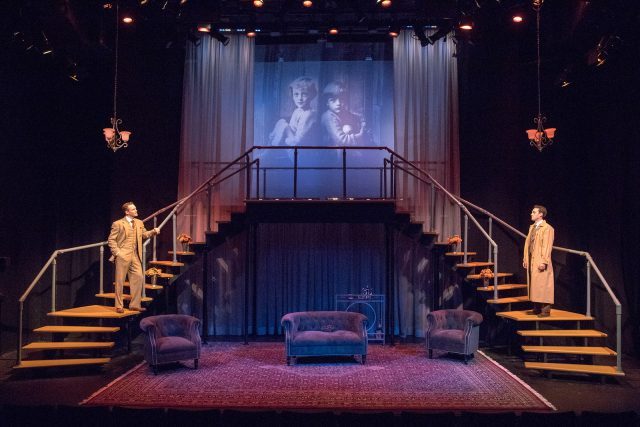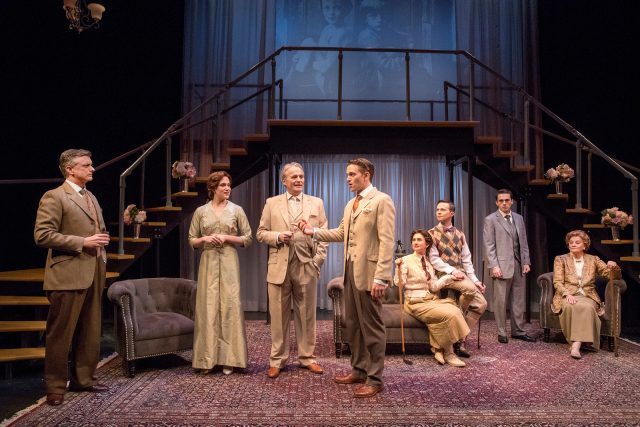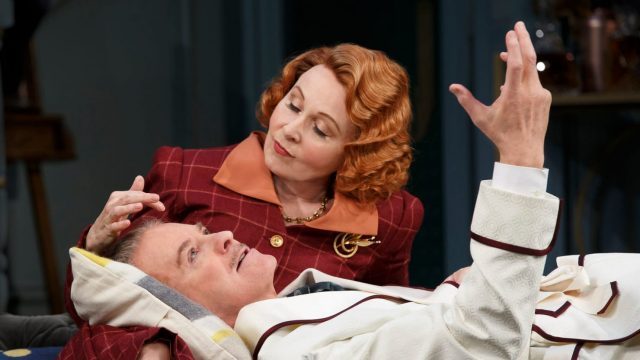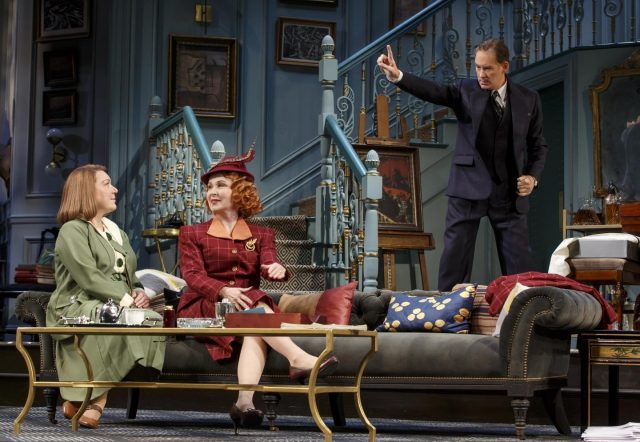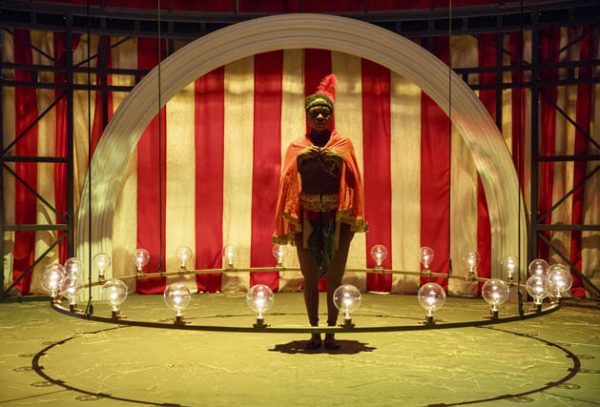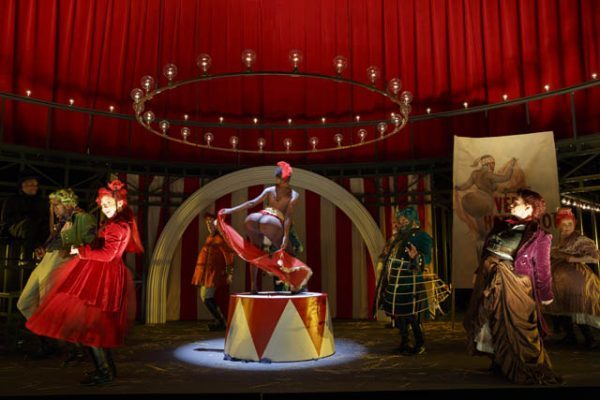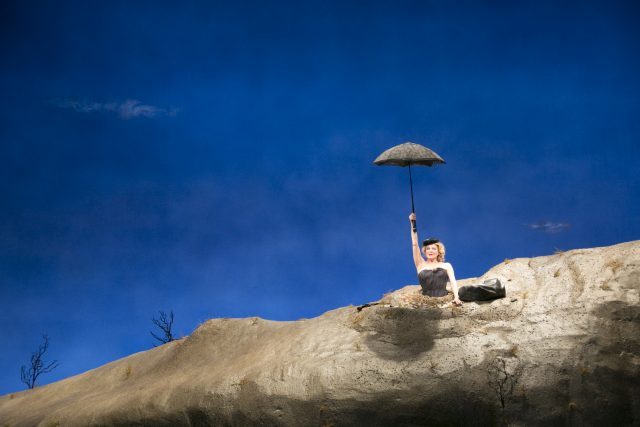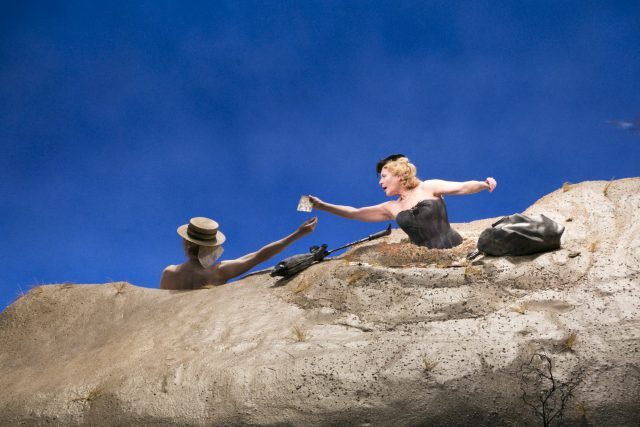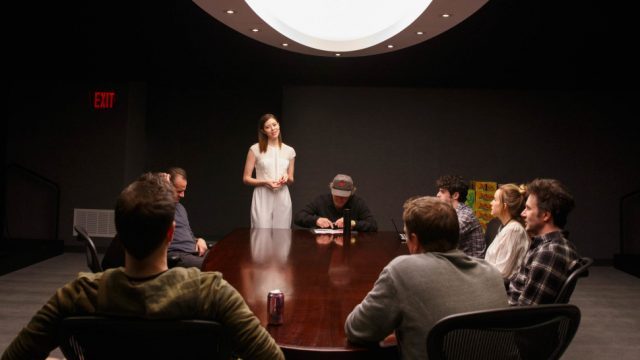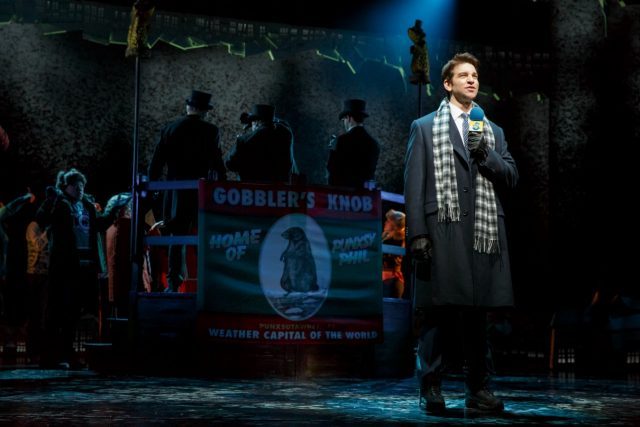
Phil Connors (Andy Karl) is trapped in Punxsutawney, PA, forced to relive Groundhog Day over and over again (photo by Joan Marcus)
August Wilson Theatre
245 West 52nd St. between Broadway & Eighth Ave.
Tuesday – Sunday through January 7, $79.50 – $169
www.groundhogdaymusical.com
“Hoping for an early spring? Well, tomorrow is Groundhog Day, and the good folks in Punxsutawney are already gathering in a snowy field waiting for the dawn. Why? Because they’re morons,” meteorologist Phil Connors (Andy Karl) declares at the beginning of Groundhog Day, the fabulous musical adaptation of the popular 1993 comedy. The arrogant, condescending, misogynistic Connors, who hosts the television program Good Weather with Phil Connors — “Thanks for watching,” he patronizingly says whenever recognized by a gushing fan — has been sent to cover the annual Groundhog Day celebration in Punxsutawney, Pennsylvania, with excited associate producer Rita (Barrett Doss) and quiet cameraman Larry (Vishal Vaidya), but he doesn’t care one iota about whether the rodent sees its shadow or whether there will be six more weeks of winter. “Small towns, tiny minds / Big mouths, small ideas / Shallow talk, deep snow / Cold fronts, big rears,” he sings about the local populace and eager tourists who have flooded the community, many who have come in costume to celebrate the aptly named Phil the groundhog. “There’s nothing more depressing than small town USA / And small don’t come much smaller than Punxsutawney on Groundhog Day,” he adds. Connors might care only about himself, unwilling to find the charm that is the core of America, but he’s about to get one very unusual comeuppance because of his snarky, superior attitude. Every morning, he wakes up to discover that it is still Groundhog Day — he is stuck in a loop in which he keeps meeting such corny, down-home characters as the Chubby Man (Michael Fatica), bed-and-breakfast owner Mrs. Lancaster (Heather Ayers), groundhog fans Mr. and Mrs. Cleveland, nerdy marching band sweethearts Fred and Debbie (Gerard Canonico and Katy Geraghty), the bumbling sheriff (Sean Montgomery), and high school acquaintance and insurance salesman Ned Ryerson (John Sanders), who all annoy him no end, especially when they want to talk about the weather. He’s trapped in a nightmare of his own making, perhaps incapable of figuring a way out.

Phil Connors (Andy Karl) and Rita (Barrett Doss) pause for a special moment in smash Broadway musical (photo by Joan Marcus)
Three-time Tony nominee Karl (On the Twentieth Century, Rocky) is a phenomenon as Connors, a role immortalized by Bill Murray in the film; he is bursting with an infectious charisma and bewitching energy that envelops the audience from the very start and never lets go; it’s an unforgettable, bravura, career-making performance by a rising star. He even has fun showing off the brace he has to wear after having torn his ACL during previews. But he’s helped tremendously by an outstanding book that really understands the heart and soul of the film, which is not a shock, as the book is written by Danny Rubin, who cowrote the movie with director Harold Ramis. Thus, the characters and the plot come first, with plenty of spoken dialogue leading into the superb music and lyrics by Australian comedian, musician, writer, director, and actor Tim Minchin, who also wrote the music and lyrics for Matilda the Musical, earning him a Tony nomination for Best Original Score. (He also played crazed rock star Atticus Fetch on Californication.) The songs flow seamlessly into the story, with some brilliant surprises. Rebecca Faulkenberry (Spider-Man: Turn Off the Dark, Rock of Ages) brings down the house as Nancy Taylor, a conquest of Phil’s who opens the second act with “Playing Nancy,” lamenting her fate both as the character and the actress playing the character. “Well, here I am again the pretty but naive one / the perky breasted, giggly, one-night-stand / Is it my destiny to be a brief diversion / just a detour on the journey of some man?” she asks, wanting to be more than she is. Later, Sanders (Matilda, Peter and the Starcatcher) delivers the beautiful ballad “Night Will Come,” about life’s inevitabilities.
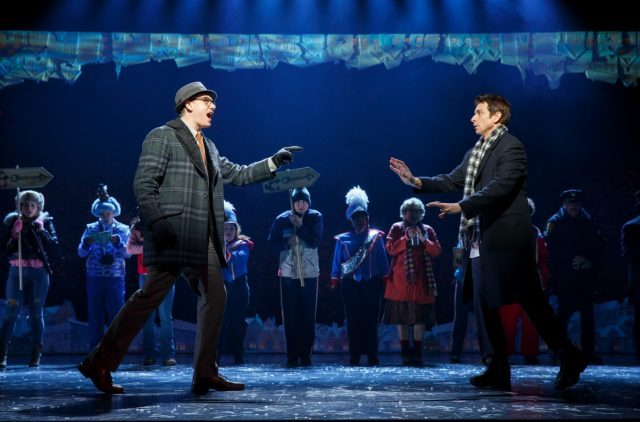
Meteorologist Phil Connors (Andy Karl) can’t stop bumping into insurance salesman Ned Ryerson (John Sanders) in Groundhog Day (photo by Joan Marcus)
Minchin and Rubin don’t sugarcoat anything, instead focusing on the bittersweet nature of human existence. Tony-winning director Matthew Warchus (Matilda, God of Carnage) never allows the show to get boring, despite so much repetition, while Peter Darling and Ellen Kane’s playful choreography weaves its way through Rob Howell’s fast-changing sets amid Christopher Nightingale’s smart orchestrations. (Howell also designed the fun costumes.) And during “Hope,” magician Paul Kieve (Ghost, Matilda) adds some very cool illusions as Phil contemplates the end. There’s a reason the Old Vic production garnered eight Olivier nominations (winning Best Actor and Best Director) and the Broadway version is up for seven Tonys (Best Musical, Best Book, Best Actor, Best Direction, Best Original Score, Best Choreography, and Best Scenic Design): The cast and crew are just that good, from top to bottom, led by Karl, all coming together to create a show to remember, one that, yes, audiences are likely to want to see over and over again and one that, despite its British roots, is profoundly American.

